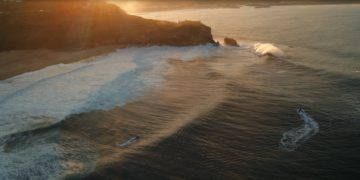Table of Contents
Photography is a wonderful way to capture and share our travel experiences. With modern smartphones outperforming the best cameras of the past, it’s easier than ever to take impressive photos. However, returning from a trip with thousands of photos can be overwhelming. Instead of focusing on quantity, let’s aim for quality. Here are some top tips from expert photographers to help you create the best travel photo report.
Mastering Your Camera Settings
Get to Know Your Equipment
Understanding your camera’s manual is essential to move beyond automatic settings. Familiarity with your equipment lays the foundation for naturally capturing photos. This includes knowing how to adjust the ISO, shutter speed, and aperture. These elements are crucial for achieving correct exposure and, with practice, can become creative tools to control the atmosphere of your photos.
Understanding Automatic Settings
Automatic settings are fantastic if you know how they work and their effects on the image. Learning to use these settings can be very helpful, but it’s also important to know when to switch to manual adjustments. In low light or when seeking a specific effect, manual adjustments can offer better results.
Essential Gear Skills
At a minimum, you should know how to change the ISO, shutter speed, and aperture, turn the flash on and off, change lenses and filters, and mount the camera on a tripod with a shutter release cable. Doing this quickly can make the difference between capturing a great photo or missing the moment.
Learning to See the Light
The Power of Light
Light’s ability to transform an ordinary subject or scene into something extraordinary is one of the photographer’s most powerful tools. Understanding how light translates to the sensor and influences composition is crucial for creating stunning images. The right light can enhance textures, colors, and shapes, making an ordinary photo extraordinary.
The Color, Quality, and Direction of Light
Having light is one thing, but having the “right” light is another. The keys to achieving this are the color, quality, and direction of the light. The color of light changes throughout the day, offering different tones that can influence the atmosphere of the photo. The quality of light, whether hard or soft, affects shadows and details. The direction of the light can highlight or soften the features of the subject.
Best Times for Photography
Most subjects are enhanced by the warm light of the sun in the hour or two after sunrise and before sunset. These golden hours lengthen shadows and accentuate textures and shapes. If you truly want to take great photographs, these are the times you should be out shooting.
Practicing Your Photography Skills
Perfecting Your Technique
If a photographer masters the technique, they can handle the equipment effectively and understand the light. Constant practice helps perfect these skills. Photograph everything you can during your travels and in your own city. Practicing in a familiar environment can help you experiment with different techniques and prepare for situations during your travels.
Practice at Home
To test your ability to study the equipment, perfect your technique, train your eye, and become familiar with light changes, conduct a photographic report of your own city. Consult a tourist guide, view postcards and photo books, make a list of potential shots, and approach this exercise as if you were far from home. This will give you an idea of the distance you’ll need to cover and whether your equipment is manageable.
Applying Knowledge to Travel
Later, you can apply this knowledge to plan your trips in more detail. Knowing what to expect and how to handle your equipment will allow you to capture better photos, even in unfamiliar situations.
Developing a Photographic Routine
Constant Preparation
A good photographer must walk around, get up early, and always have the camera around their neck and without the lens cap. Before going out to take photos, make sure you have enough memory and battery for the entire day, as well as a notebook and pencil. Constant preparation is key to not missing any photographic opportunity.
Early Morning Light
Getting up early is essential. The dawn light is usually better, and activity in towns and markets is more intense and interesting. The photographer will be rewarded with experiences and images that most people miss. The soft morning light can make photos magical.
Quick Adjustments
Keep the camera around your neck, turned on, and without the lens cap, because you are likely to need it at any moment. Constantly check that the ISO value is appropriate, especially when moving in and out of poorly lit interiors. This routine will help you always be ready to capture the perfect shot.
Planning and Researching
The Importance of Preparation
Study and preparation help the photographer be in the right place at the right time. More time means more opportunities to photograph: sometimes a few extra minutes can make a big difference. Knowing when and where important events happen can provide excellent opportunities for unique photos.
Prior Research
Find out when special events like local festivals, holidays, and weekly markets occur. The spectacle, colors, and people gathered on these special dates provide many reasons for good photos. Planning the trip with these events in mind can result in stunning photos.
Knowing the Location
To make the day as productive and satisfying as possible, know the streets and dimensions of the city or area if it is a natural place, as well as where the main points of interest and activities are. The hotel should be as central as possible to save time and effort in transportation.
Committing to the Image
Observation and Patience
Much of the time a photographer spends creating good photos is not shooting but observing. Good photographs rarely result from chance. It is necessary to be in the right place, observe, and wait for the perfect moment to capture an interesting photo.
Seeking the Perfect Moment
If you find a good spot and the light is right, but a crucial element is missing, like a child in a red jacket running into the frame, wait patiently. Commit to the image and wait for the perfect moment to shoot.
Quality Over Quantity
Waiting a few seconds for something to happen, a couple of hours for the weather to change, or returning at a different time of day can significantly improve the quality of your images. Commitment to the image is a key trait of every professional and makes a photo truly special.
Critically Assessing Your Photos
Critical Observation
Today, people take and view more photos than ever; therefore, it is important to take time to observe them critically and objectively. It’s not easy, but it is essential to improve. We all get emotionally attached to our photos, but if we want them to stand out, we need to evaluate them carefully.
Evaluation Process
The evaluation and selection process is perfect for reflection and learning. Before discarding a file, examine the Exif data to find out why something didn’t turn out as expected. Looking for recurring patterns will help you identify and correct common mistakes in the future.
Continuous Improvement
Self-criticism is an essential ongoing process in a photographer’s life. By thoroughly studying your photos, you can identify what works and what doesn’t, continuously improving your technique and increasing the percentage of acceptable images.
Exploring Different Angles
Finding Unique Perspectives
Experiment with different angles and perspectives to make your photos stand out. Shooting from high above or down low can provide a fresh viewpoint that makes your photos more dynamic and interesting.
Moving Around
Don’t just settle for the first angle you see. Move around your subject to find the best composition. Sometimes the most compelling shot is from a different angle than the obvious one.
Using Leading Lines
Use leading lines to draw the viewer’s eye into the photo. Roads, paths, rivers, and fences can all lead the viewer’s gaze towards the main subject, creating a sense of depth and movement.
Utilizing Negative Space
Embracing Minimalism
Negative space, the area around and between the subject of an image, can be used to create striking compositions. Embracing minimalism by leaving ample space around your subject can make your photos more powerful.
Creating Balance
Negative space can help to create balance and harmony in your photos. It allows the subject to breathe and can highlight the main focus of your image without distractions.
Highlighting the Subject
By using negative space, you can make your subject stand out more. It draws attention to the subject and can evoke emotions, making your photos more impactful.
Capturing Motion
Freezing Motion
Freezing motion in your photos requires a fast shutter speed. This technique is great for capturing action shots, such as a bird in flight or a person running. It creates a dynamic and exciting image.
Showing Movement
To show movement in your photos, use a slower shutter speed. This will blur the motion, such as the flowing water of a waterfall or the lights of moving cars at night. It can add a sense of energy and flow to your images.
Panning Technique
Panning is a technique where you move the camera to follow a moving subject. This keeps the subject in focus while blurring the background, emphasizing speed and motion. It takes practice but can yield stunning results.
Enhancing Photos with Post-Processing
Editing Software
Invest in good photo editing software to enhance your images. Programs like Adobe Lightroom and Photoshop offer powerful tools for adjusting exposure, contrast, color, and more. Learning to use these tools can significantly improve your photos.
Basic Adjustments
Start with basic adjustments like cropping, straightening, and correcting exposure. These simple tweaks can make a big difference in the overall look of your photo. Fine-tuning these elements ensures that your image is well-balanced and visually appealing.
Advanced Techniques
Explore advanced techniques like dodging and burning, selective color adjustments, and applying filters. These can help you create a specific mood or highlight particular aspects of your photo, taking your images to the next level.
Using Natural Elements
Incorporating Weather
Weather conditions can dramatically alter the mood and atmosphere of your photos. Incorporate elements like rain, fog, or snow to add depth and interest. Weather can transform a familiar scene into something extraordinary.
Natural Frames
Use natural elements to frame your subject. Trees, arches, and even shadows can create a natural frame around your subject, drawing attention and adding layers to your composition.
Reflections
Look for reflections in water, glass, or other surfaces. Reflections can add symmetry and interest to your photos, creating a visually appealing image with a creative twist.
Exploring Black and White Photography
Focus on Contrast
Black and white photography relies heavily on contrast. Look for scenes with strong light and dark areas to create impactful images. High contrast can highlight textures and shapes, making your photos more dramatic.
Texture and Shape
Without color, texture and shape become more prominent. Focus on these elements to create striking black and white images. Pay attention to how light interacts with surfaces to bring out details.
Timeless Quality
Black and white photography has a timeless quality that can evoke nostalgia and emotion. Use it to give your photos a classic, enduring appeal. It can simplify complex scenes and focus attention on the essence of your subject.
Creating Depth in Photos
Foreground, Middleground, Background
Incorporate elements in the foreground, middleground, and background to create depth in your photos. This technique adds layers and makes the image more engaging. It helps to guide the viewer’s eye through the scene.
Using Aperture
Control depth of field with your aperture settings. A wide aperture (small f-number) creates a shallow depth of field, blurring the background and making the subject stand out. A narrow aperture (large f-number) keeps more of the scene in focus, useful for landscapes.
Perspective and Scale
Use perspective and scale to enhance the sense of depth. Placing objects of known size in the frame can help convey distance and dimension. Experiment with different focal lengths to see how they affect the perception of depth.
Including People in Your Shots
Adding Human Element
Including people in your photos can add interest and tell a story. Capture candid moments to convey emotion and context. The human element can make a scene more relatable and engaging.
Posing Techniques
If you’re taking portraits, pay attention to posing. Natural, relaxed poses often work best. Guide your subject to positions that complement the light and background. Interaction with the environment can add authenticity.
Street Photography
Street photography captures the essence of daily life and culture. Be respectful and mindful of your surroundings. Look for unique characters, interesting interactions, and moments that reflect the local atmosphere.
Experimenting with Composition
Rule of Thirds
The rule of thirds is a fundamental composition technique. Imagine a grid over your image with two horizontal and two vertical lines. Place key elements along these lines or at their intersections to create balanced and visually appealing photos.
Leading Lines
Use leading lines to draw the viewer’s eye into the photo. Roads, paths, rivers, and fences can all lead the viewer’s gaze towards the main subject, creating a sense of depth and movement.
Symmetry and Patterns
Symmetry and patterns can be powerful compositional tools. Look for natural or man-made patterns and symmetrical scenes. These can create a sense of order and harmony in your photos.
These expert photography tips will help you capture stunning images during your travels. From mastering your camera settings to post-processing techniques, each step is essential for improving your photography skills. Happy shooting!




















